These morning buns are flaky and buttery croissants rolled with flavorful filling of cinnamon, sugar, butter and orange zest. They make amazing snacks, breakfast or desserts.
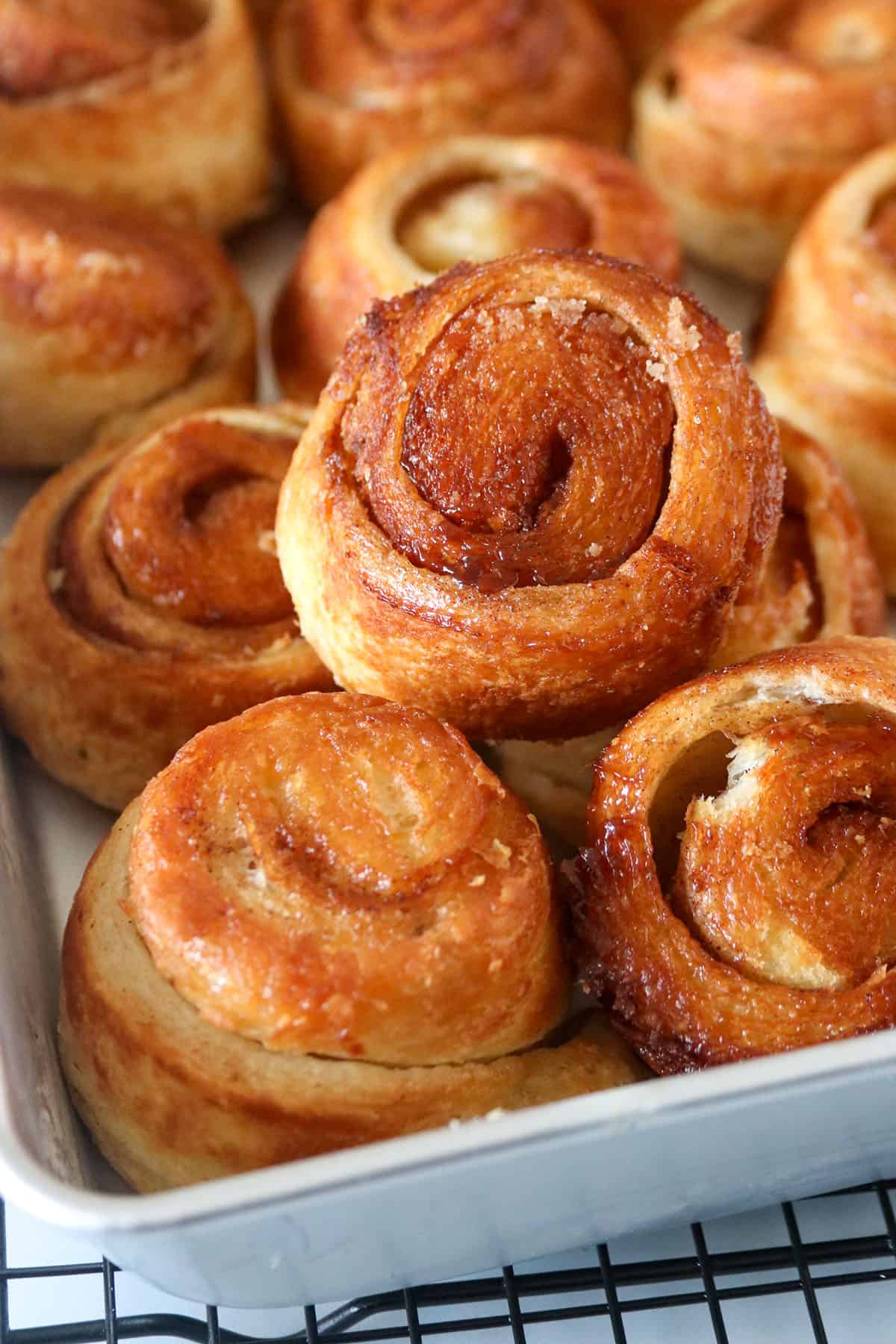
Hi everyone! We have heavenly treats on the blog today. Since I shared with you a croissant dough recipe already, we are now making these beautiful pastries called Morning Buns from Tartine’s bakery.
These are glorious rolls of croissants filled with a mixture of sugar, cinnamon and orange zest to deliver an amazing flavor with a little citrus bite.
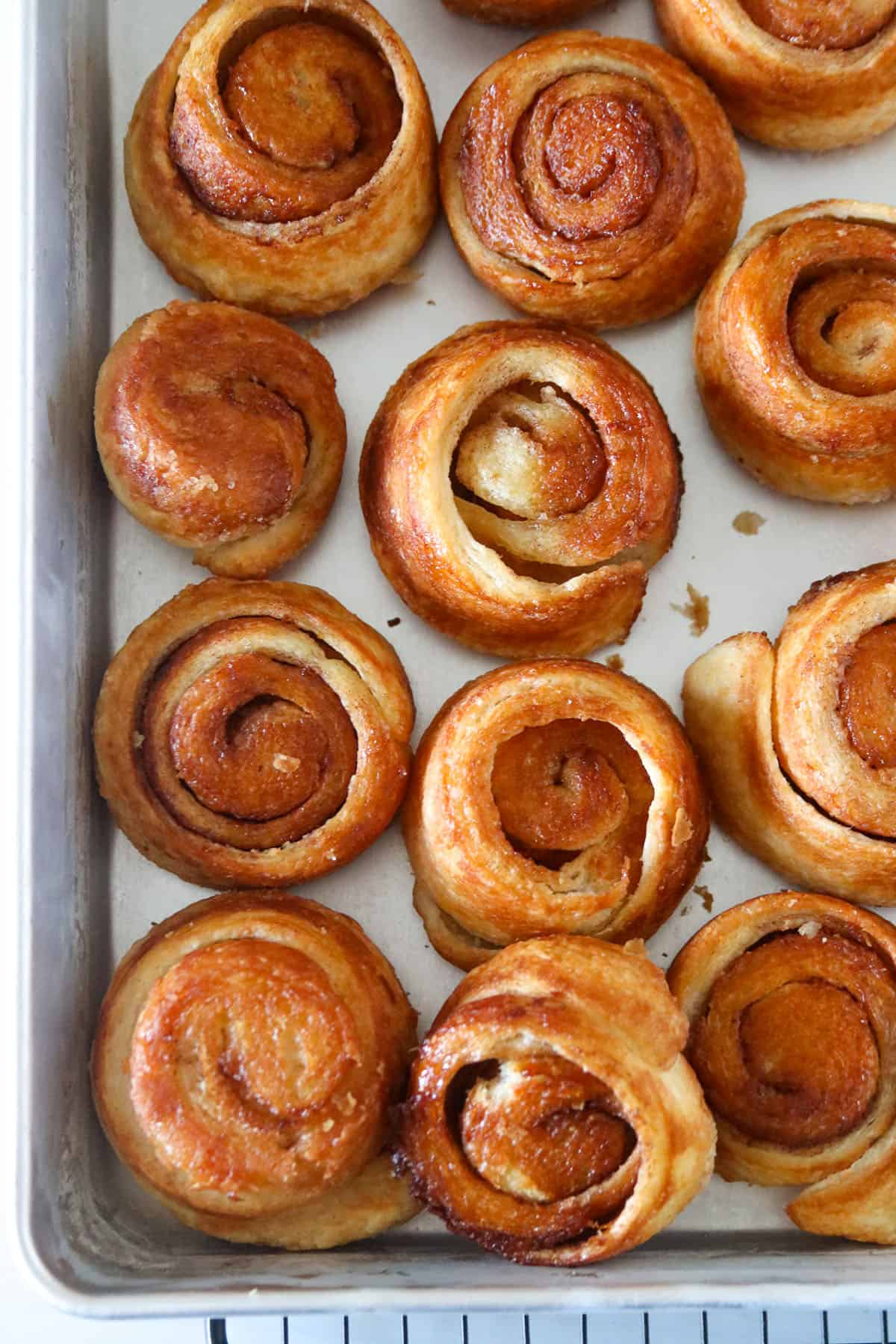
Table of Contents
- Tartine’s Morning Buns
- The Ingredients
- Recipe Process Overview
- IMPORTANT POINTERS AND TIPS FOR SUCCESS
- Step by Step Process
- Frequently Asked Questions
Tartine’s Morning Buns
I first came across these from one of my favorite blogs, Butter Baking. Just by looking at the the stunning pictures of this pastry, I can almost feel the delicate, buttery layers on my mouth. So I said to myself, ” I am going to make these, for sure!” Without even knowing that the buns are not regular bread dough. They are actually croissants.
So I knew If I really wanted those pastries, I had to make the croissant dough. The much-feared croissant dough with its long, laborious process.
But actually, once I signed up for the deed, I realized that making croissants is not that hard as it seems. All you really need is time and patience, and you can execute the croissant dough process at home with no problem.
The Ingredients
- The croissant dough recipe consists of staple pantry ingredients: flour, yeast, sugar, butter, milk and salt.
- The filling has range zest giving it a nice, bright flavor to pair with the touch of cinnamon.
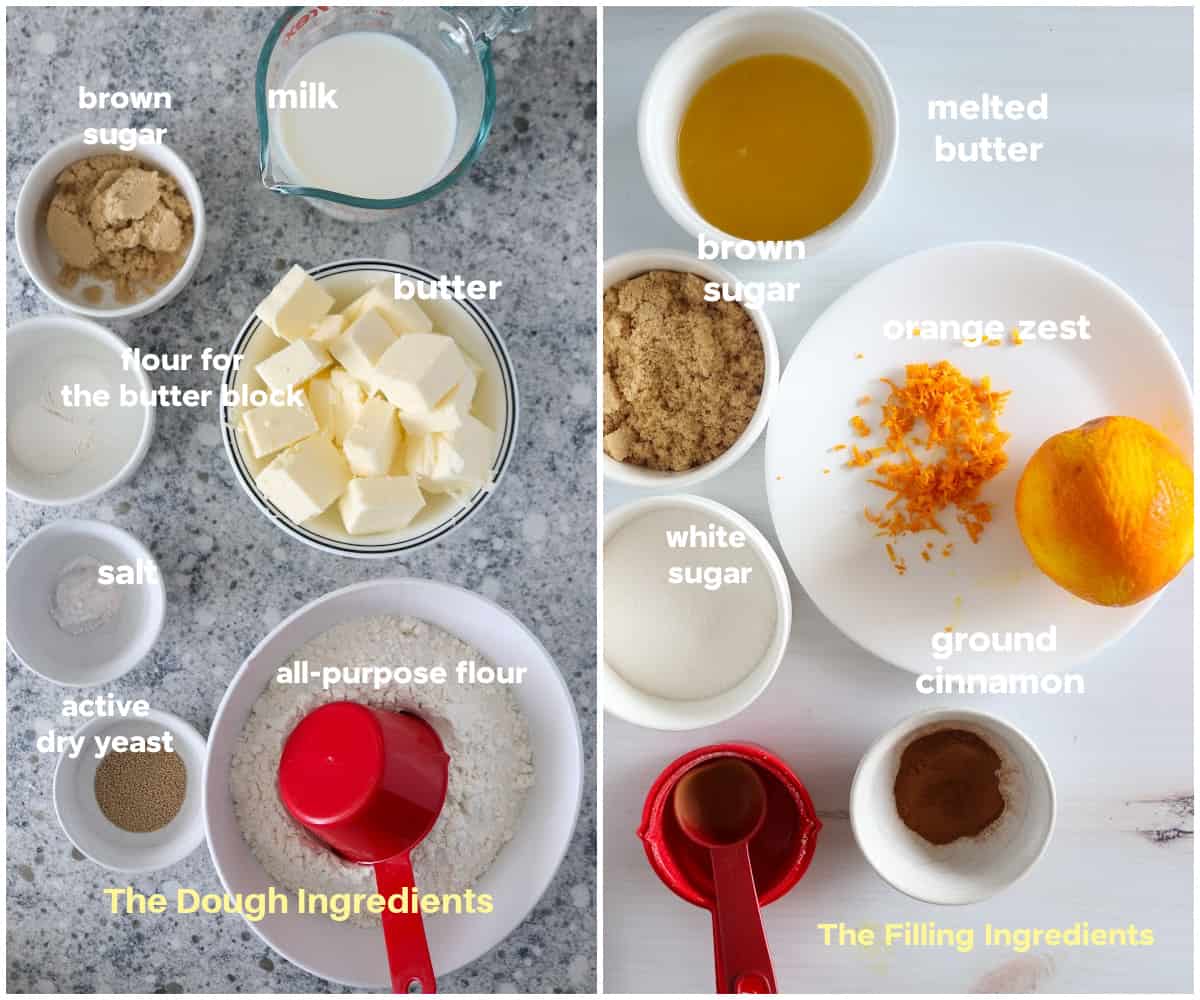
Recipe Process Overview
- Make the Dough
- Make the Butter Block
- Enclose the Butter in the Dough
- The First Fold and Chill
- Repeat the Fold and Chill Three More Times
- The Double Fold and Long Chill
- Shaping and Baking
IMPORTANT POINTERS AND TIPS FOR SUCCESS
- Adequate Dusting of Flour to Prevent Sticking During Rolling Out. This recipe is a series of rolling out the dough and folding it into a neat package (you will see below). Make sure the surface for rolling the dough is adequately dusted with flour to prevent sticking. It helps to lightly dust the top of the dough too during rolling.
- Cracking of Dough. You will fold the rectangular dough 4 times in this process, with chilling time in between. Between second and fourth fold, you may see the dough is starting to have some cracks or peeling. This is normal because the yeast is doing it’s work. To fix this, simply patch the teared area with flour. Brush any excess flour in the dough before folding and chilling.
- Resting the Dough for Easier Rolling. If anytime during rolling you feel the dough is retracting or getting harder to roll, simply leave it alone for about 5 minutes to let it rest. Once it is rested, it will be easier to roll it out. If it is too hot here you are, allow the dough to rest in the fridge, covered well.
- Keeping the Dough and Butter Cold. If at anytime during rolling, the dough starts to feel warm, wrap it in plastic film and give it a quick chill in the freezer for 10-15 minutes.
- Freezing the Dough to Continue the Process at a Later Time. You can freeze the dough at any point after every fold. To continue, thaw the dough in the fridge and then carry on with the instructions.
- Wrapping the Dough During Chilling. Make sure no part of the dough is exposed when you place it in the fridge or freezer. Exposure will lead to unwanted crust forming the surface of the dough.
Step by Step Process
Make the Dough
- In the bowl of a stand mixer, combine warm milk, yeast and the brown sugar. Let this sit for about 5 minutes, until the mixture is thick and foamy.
- Combine 3 ¾ cup of flour and salt. Attach the dough hook to the mixer. Gradually add the flour mixture in three additions to the yeast mixture, beating at low speed after each addition,
- Then slowly speed up to fully incorporate the flour. At this point, if the dough is separating into long, dry and powdery chunks, drizzle about 1-2 tbsp. of milk, then mix until the dough comes together. If your dough is coming together well, there is no need to add extra milk.
- Continue to run the mixer until the dough is smooth and cleans the sides of the bowl.
- Turn the dough over into a clean surface, and knead briefly. Pat it into a 1 ½ inch thick rectangle.
- Wrap it in plastic film and chill for 1 hour.
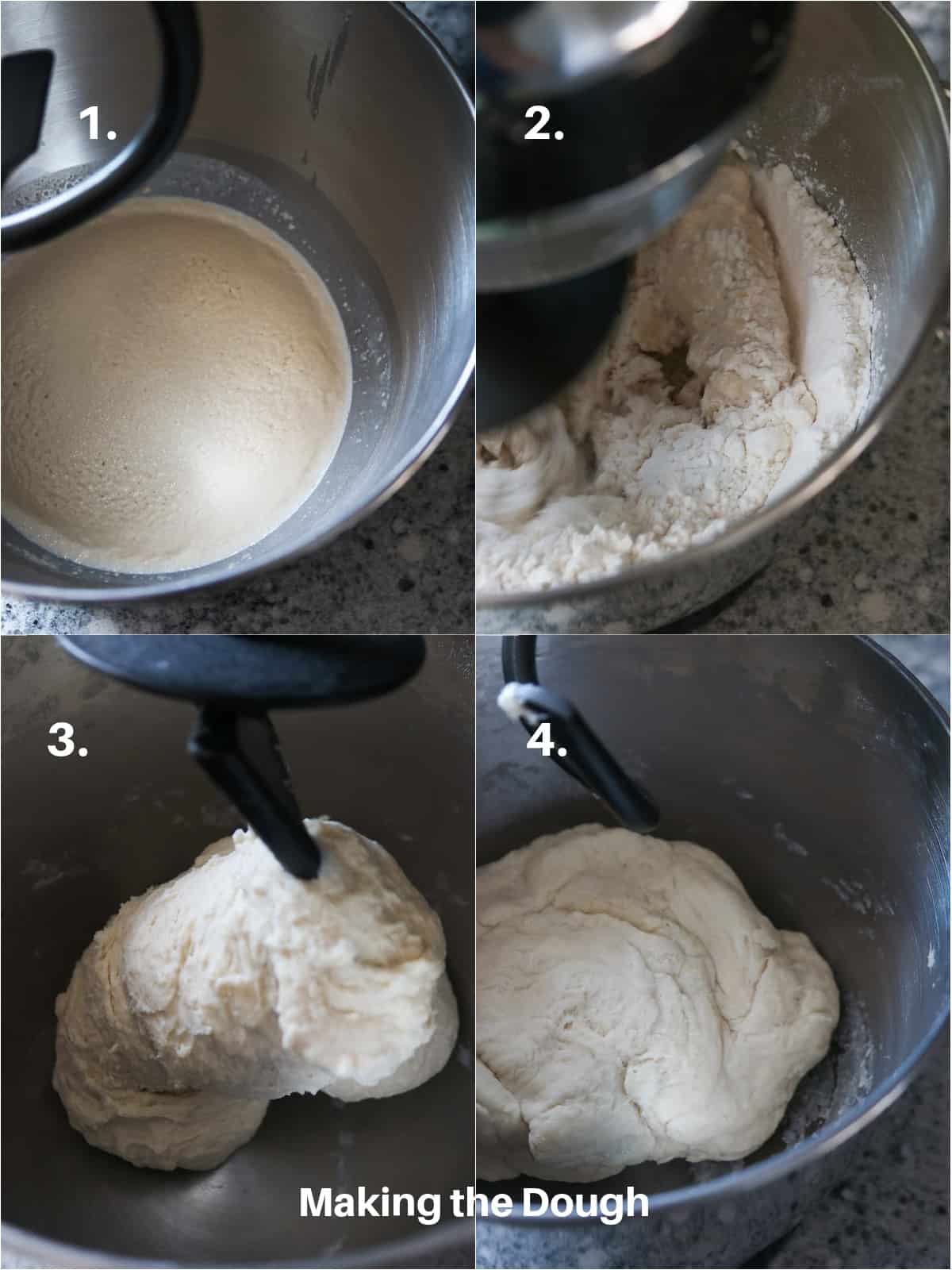
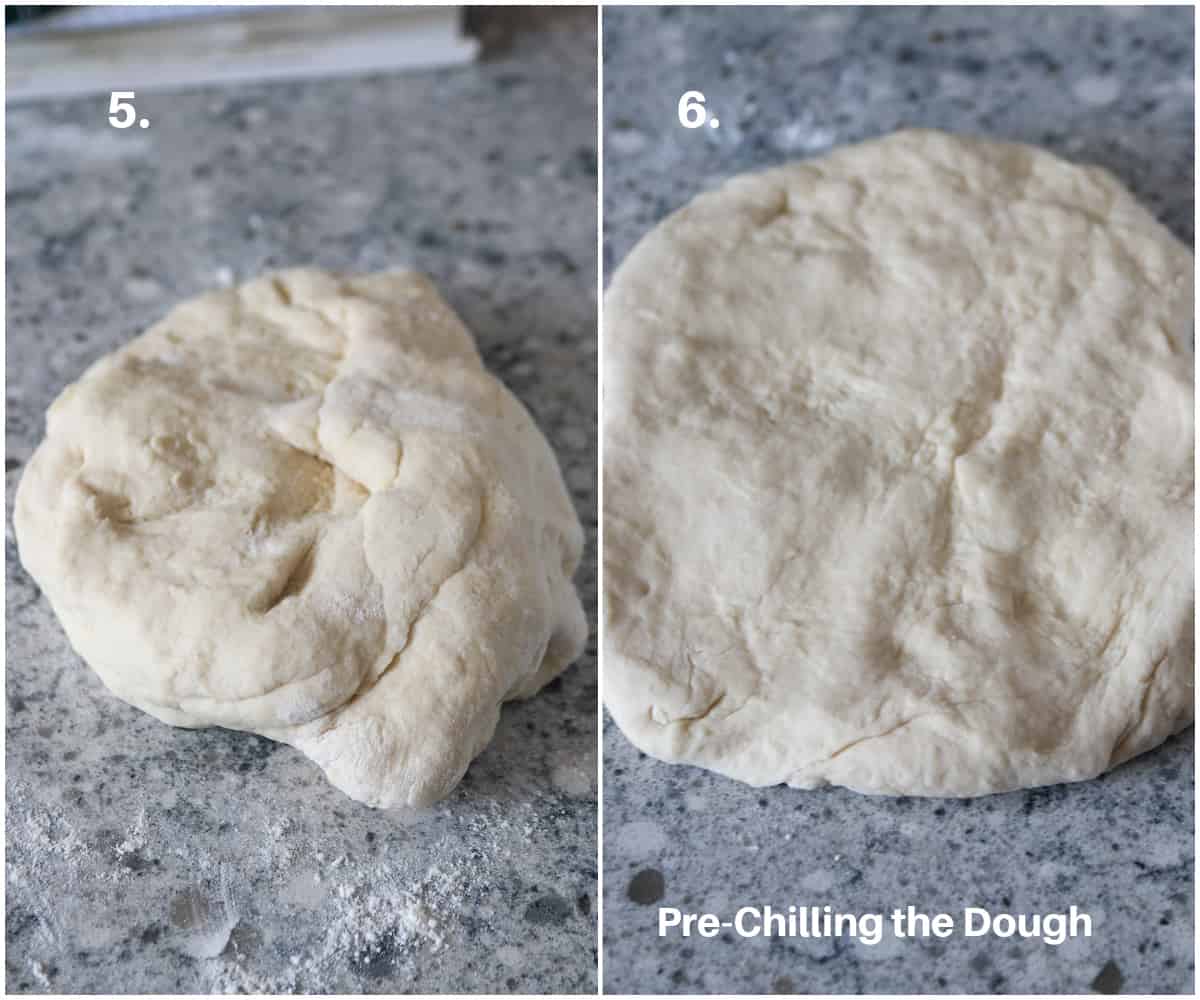
Prepare the Butter Block
- While the dough is in the fridge, prepare the butter. Combine butter in the bowl of a stand mixer. Beat butter and flour in the bowl of a stand mixer fitted with paddle attachment until incorporated and smooth.
- Transfer the butter into a large plastic film. Wrap it and pat into a 5 inch rectangle that is about 1 inch thick.
- Make sure to tap and pack it well to release any air pockets.
- Chill this in the fridge until the dough is ready.
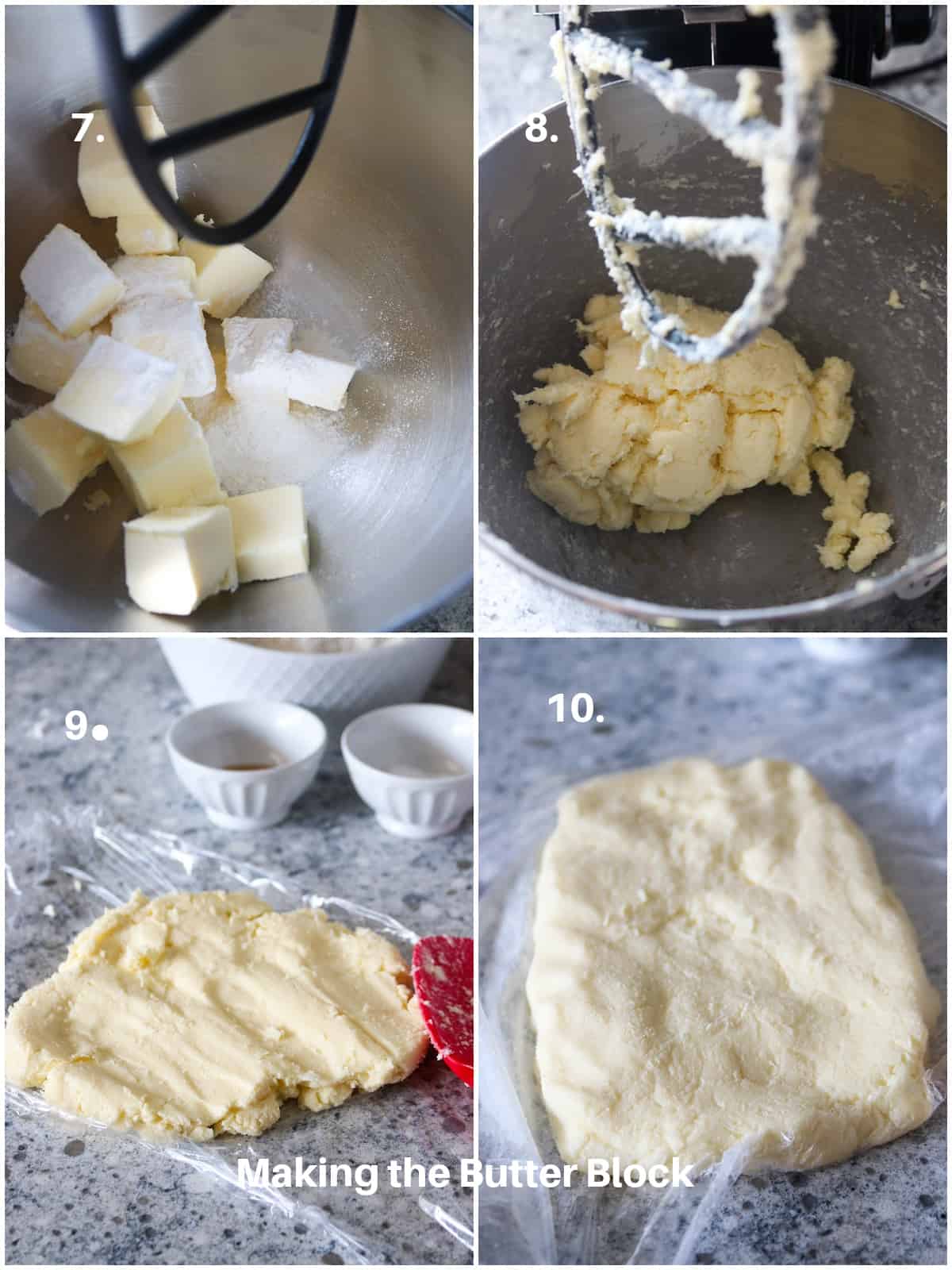
Enclose the Butter in the Dough
- After chilling the dough, unwrap it and roll it into a 17 x 10 inch rectangle.
- Lay the butter block on the center of the dough. The long edge of the butter should be parallel to the short edge of the dough.
- Fold the dough business letter style: Fold the bottom part over to the center to fully cover the butter. Stretch the dough as necessary to keep the edges straight.
- Fold the upper part of dough over to the center, fully covering the first flap. The butter is now enclosed in the dough. Brush any excess flour from the dough. if the dough has gotten warm at this point. Wrap it in plastic film, place it in a baking pan and chill it in the fridge for 30 minutes. Otherwise, let’s move on to the Rolling and Folding part.
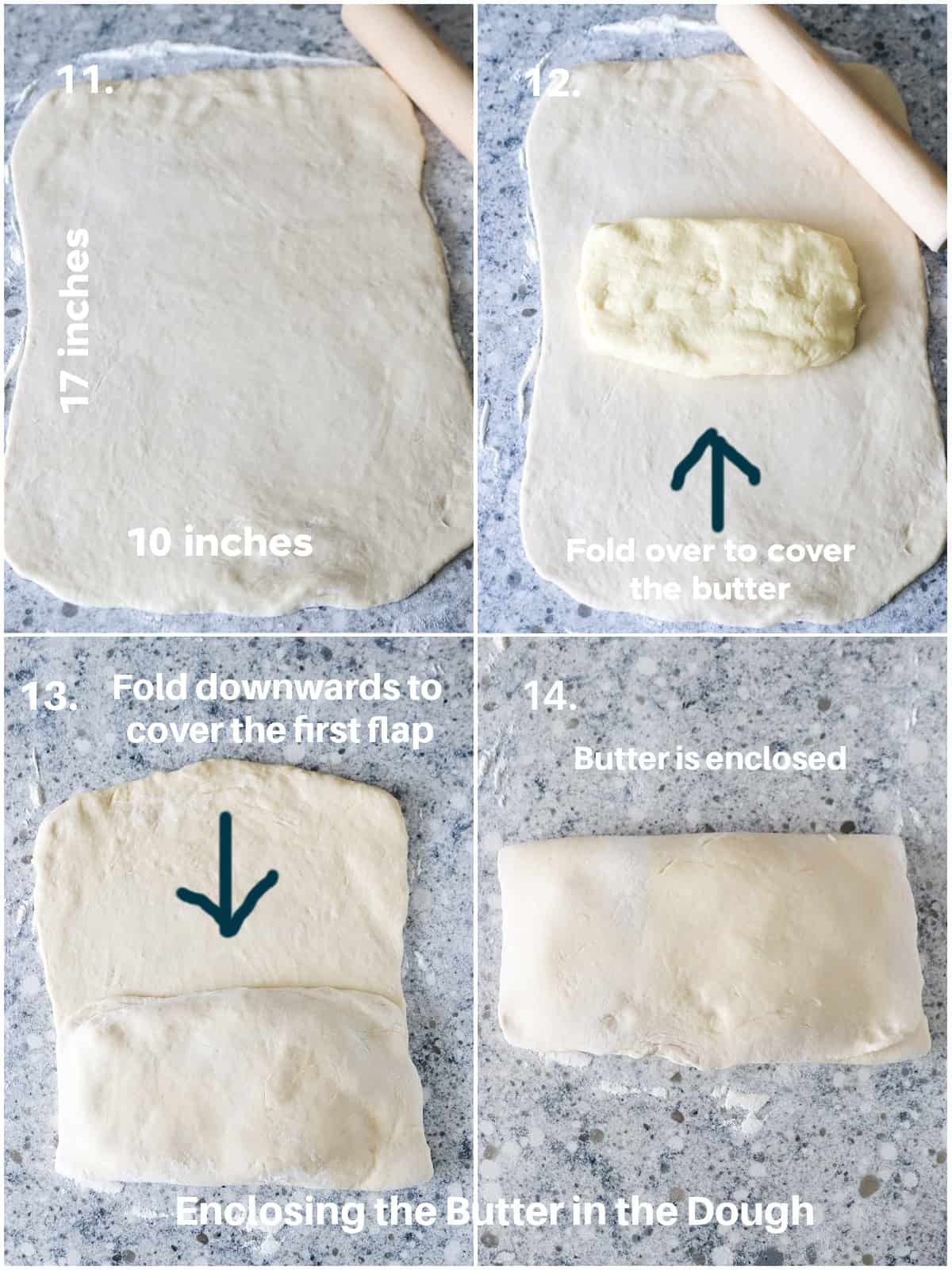
The First Fold
- On a floured surface, position the rectangle dough so that the short edge is closest to you. Using a rolling pin, gently pound the dough along its length to gently flatten the butter block inside.
- Roll it out into 17 x 10 inches rectangle, keeping the edges straight as best as you can.
- Fold the lower flap of the dough towards the center.
- Fold the upper flap over the center to cover the first flap. This is now now your first fold.
- Wrap the dough in plastic film. Place it in a baking pan.
- Cover it with a clean towel and chill in the fridge for 1 hour, or in the freezer for 30 minutes.
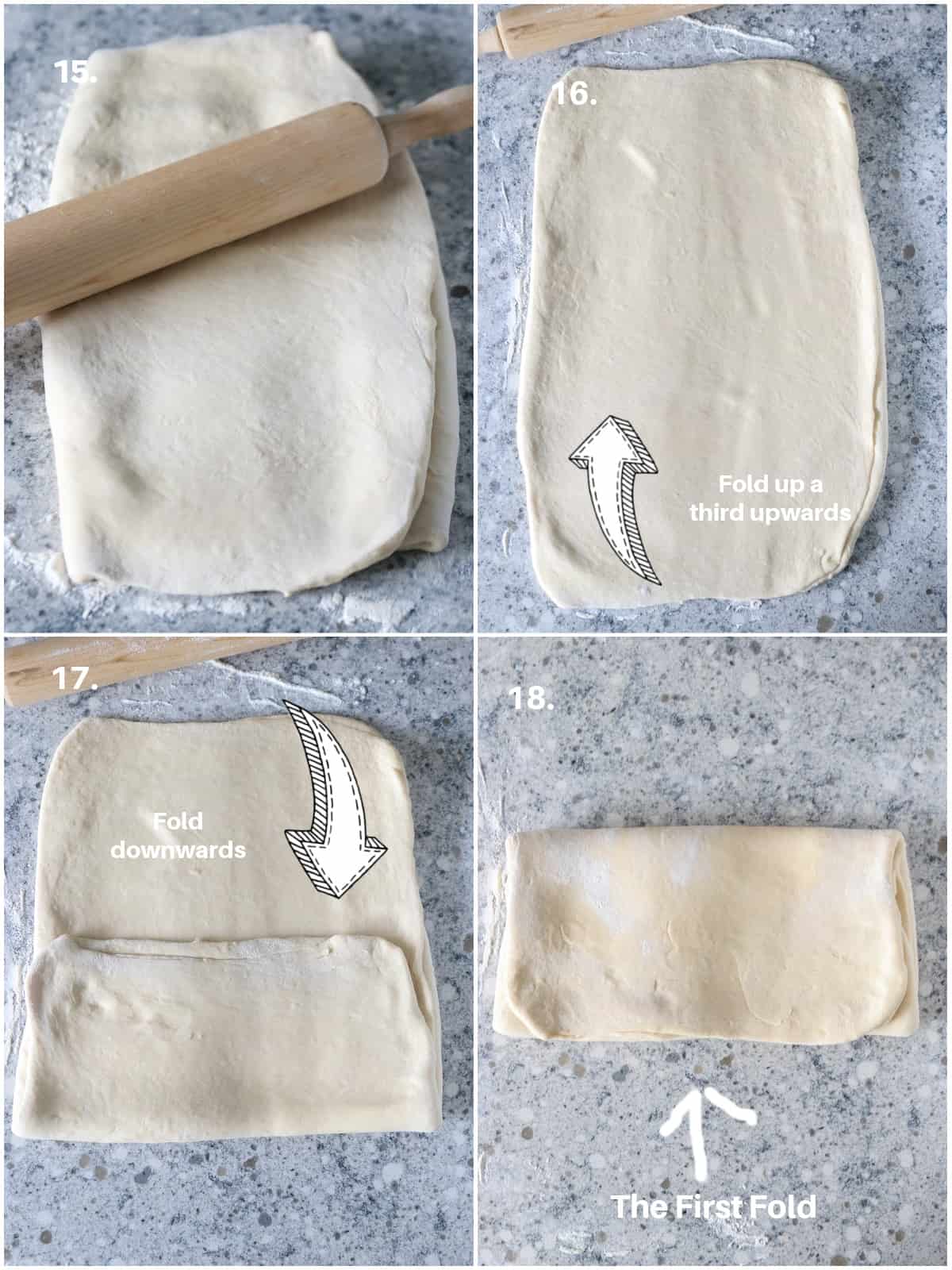
Repeat the Rolling and Folding Three More Times
- So after the dough has chilled, position it in the surface so that the short edge is closes to you. Roll it out again into a 17x 10 inches rectangle. Each time you roll out the dough, make sure the surface is dusted with flour, as well as the top of the dough to prevent any sticking.
- 22. Again, fold the lower flap over to the center, then fold the upper flap over to cover the first 23. flap. This is your second fold. Brush any excess flour. Wrap this again in the same manner as before. Chill in the fridge for 1 hour or in the freezer for 30 minutes.
- 24. Take out the dough from the freezer and repeat the roll out and fold to make your Third Fold. Brush any excess flour. Wrap again and Chill.
- Next, take out the dough from the fridge. Roll it out again. This time you will see the the dough is starting to have some cracks. This is normal. If you encounter one, simply patch the area with some dusting of flour. It is also important that the surface is floured to prevent any sticking. Fold the dough in the same manner. This is your Fourth Fold. If the dough as gotten warm at this point, pop it again the fridge for 30 minutes. If not, go ahead and continue to the next step.
The Double Fold and The Long Chill
- Roll out the dough into a 20×10 inches rectangle.
- Then, with the long edge closest to you, fold the two sides so that the two short edges meet at the center.
- Fold the entire thing in half so that the opening is to the right, like a book. Wrap the dough again and chill it the fridge for at least 8 hours, but not more than 18 hours.
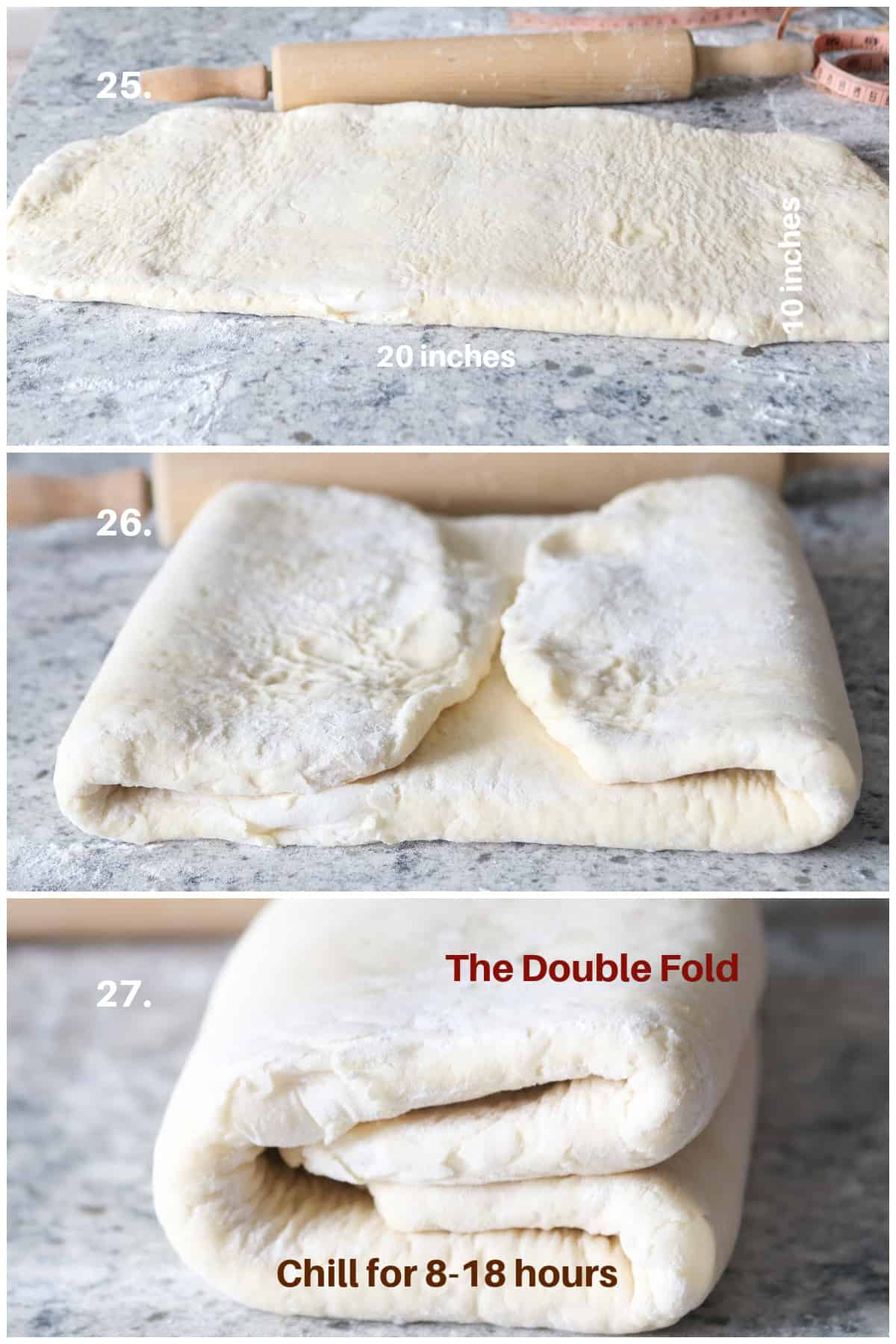
Shaping and Baking the Buns
- Grease the cavities of a regular sized muffin pans with melted butter, plus up to 8 of of the cavities of a second one. Sprinkle each greased slot with white sugar, tapping the excess.
- Now making these morning buns is pretty much like making cinnamon rolls. You roll out the dough to a 12 x 24 inch rectangle, sprinkle the filling over top, then use your hands to spread the filling all over the surface of the dough.
- Roll the dough into a tight log, starting on the long edge. Cut it into 1 ¼ inch thick discs. Place the discs into the greased muffin holes. Cover them loosely and let sit at room temperature for 1 hour.
- Transfer to the fridge and let rest for another hour. Preheat oven to 400 F. Bake the buns for 20-25 minutes, or until golden, rotating the pan halfway.
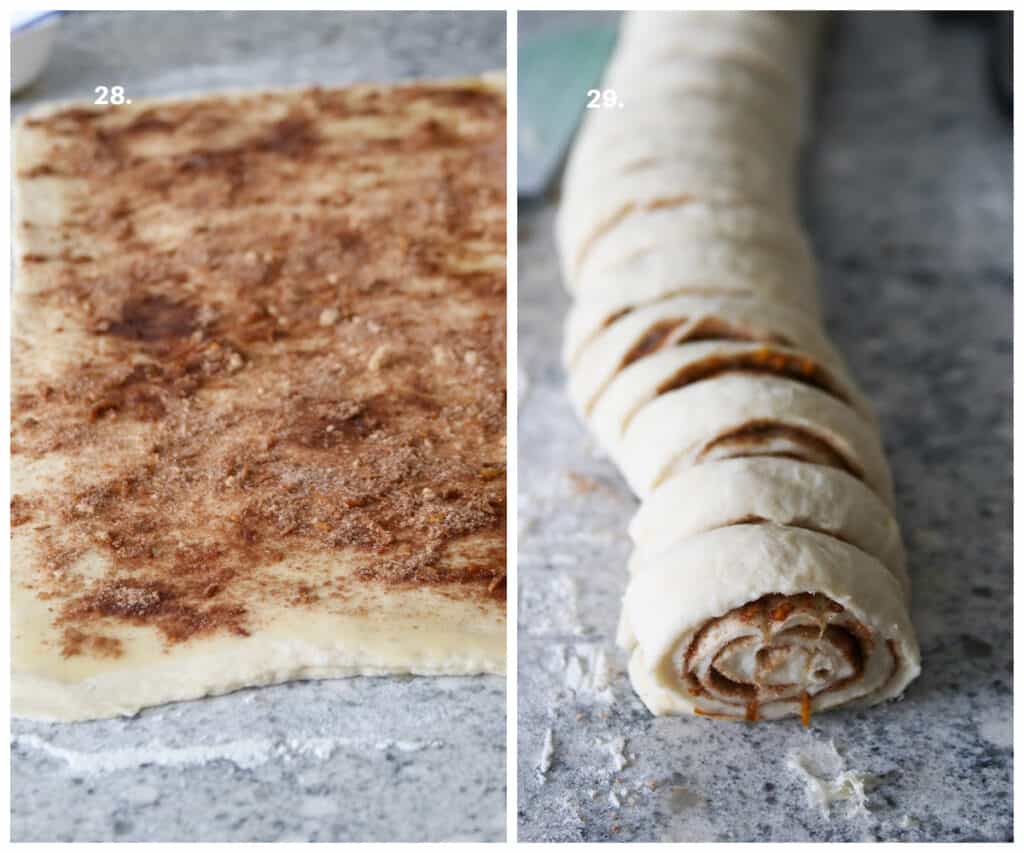
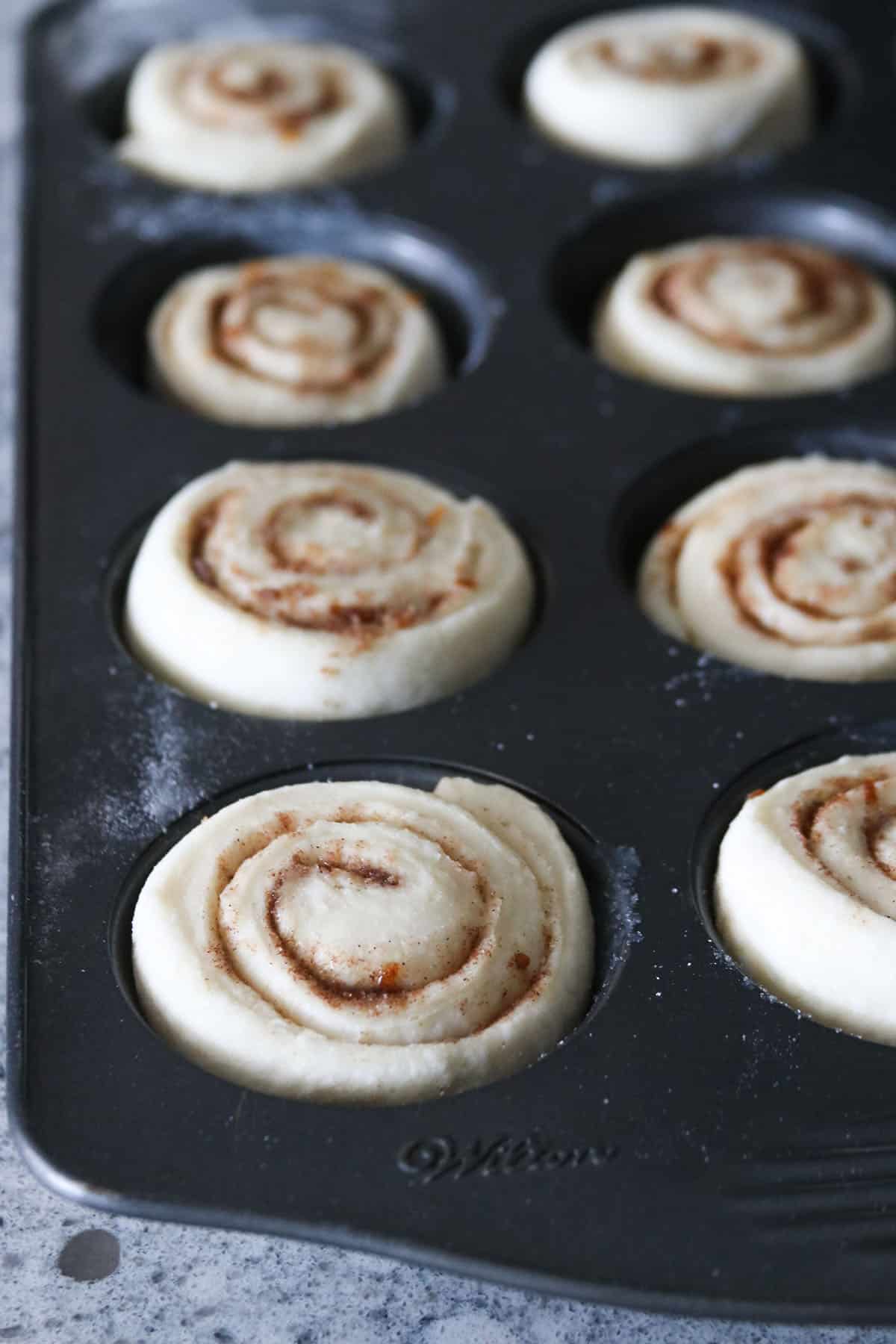
Frequently Asked Questions
You can freeze the dough after the double fold. So, instead of the long chill, you can freeze the dough for up to 3 weeks. To use it, thaw it in the refrigerator and continue with the instructions of making the croissants, or any other pastry using croissant dough.
Wrap the Dough in plastic film, then in foil. Make sure no part of the dough is exposed.
Yes, you can. Wrap them well in plastic film, then in foil. Or place them in a freezable container for up to 2 weeks.
Unfortunately, there is no shortcut to making croissants. However, I have an easier version of morning buns that have a comparable flavor to this one. Check out Early Morning Breakfast Buns.
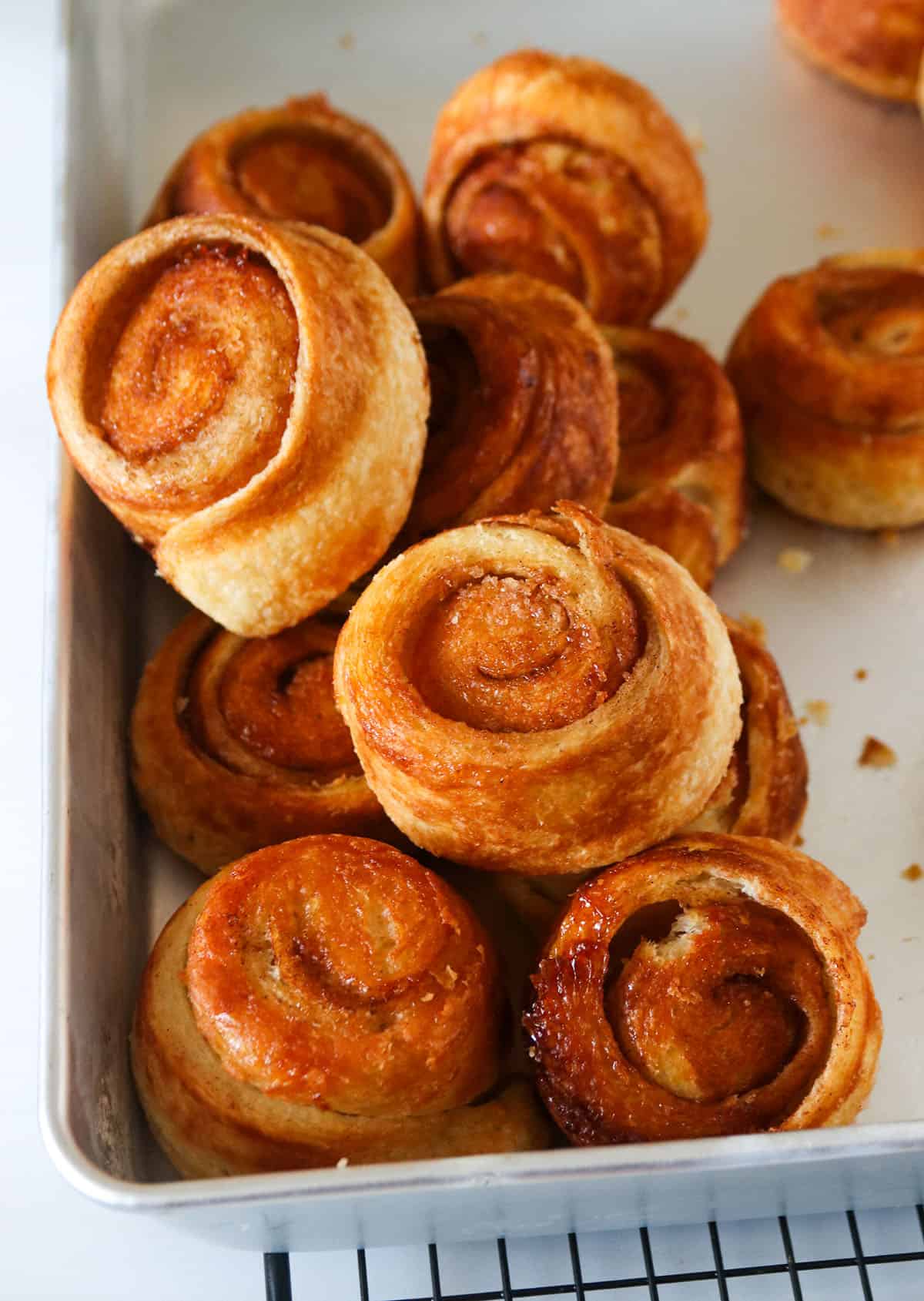
The exterior have tender-crisp flaky layers and as you bite, the buttery crumbs are infused with the cinnamon and the orange zest which is such a wonderful combination.
Just look at those! I hope you tackle this croissant project one of these days and make these morning buns. Just one bite and you will see that all those rolling and folding is totally worth it!

Tartine's Morning Buns
Equipment
Ingredients
For the Croissant Dough
- 1 ¼ cup warm milk 105-115 ℉
- 1 tbsp active dry yeast
- ¼ cup brown sugar
- ½ tbsp salt
- 3 ¾ cup all-purpose flour scooped and levelled
- 1 ½ cup unsalted butter cut into cubes
- 1 ½ tbsp all-purpose flour
For the Filling
- ⅓ cup brown sugar
- ⅓ cup white sugar
- 2 tbsp cinnamon
- zest of 2 oranges finely grated
- Pinch of salt
- ½ cup unsalted butter melted
Instructions
Make the Dough
- In the bowl of a stand mixer, combine warm milk, yeast and the brown sugar. Let this sit for about 5 minutes, until the mixture is thick and foamy.
- Combine 3 ¾ cup of flour and salt. Attach the dough hook to the mixer. Gradually add the flour mixture in three additions to the yeast mixture, beating at low speed after each addition, then speeding up to fully incorporate the flour. At this point, if the dough is separating into long, dry and powdery chunks, drizzle about 1-2 tbsp of milk, then mix until the dough comes together. If your dough is coming together well, there is no need to add extra milk.
- Continue to run the mixer until the dough is smooth and cleans the sides of the bowl. Turn the dough over into a clean surface, and knead briefly. Pat it into a 1 ½ inch thick rectangle. Wrap it in plastic film and chill for 1 hour.
Make the Butter Block
- In the bowl of a stand mixer fitted with the paddle attachment, combine the cubed butter and 1 ½ tbsp all-purpose flour. Beat the mixture until it is smooth and incorporated. The butter may still be in chunks, but the flour should have been fully incorporated into it.
- Turn the mixture into a large plastic film. Wrap the butter and gently pat and mold it into a 5 inches rectangle that is about 1 inch thick. Make sure to press and pat the butter so that no air pockets remain. Chill this in the fridge until the dough is ready.
Enclose the Butter into the Dough
- On a floured surface, roll out the dough into a 17x 10 inches rectangle. Unwrap the butter and position it at the center of this rectangle dough. The short edge of the butter should be parallel to the long edge of the dough.
- Fold the lower flap of the dough upward to cover the butter.
- Fold the upper flap downward to cover the first flap. The butter is now enclosed in the dough. If the dough has gotten warm, wrap it in plastic film and place it in a baking pan. Pop it in the fridge for 1 hour, if not, move on to the next step.
The First Fold
- On a floured surface, position the rectangle dough so that the short edge is closest to you. Using a rolling pin, gently pound the dough along its length to gently flatten the butter block inside. Roll it out into 17 x 10 inches rectangle, keeping the edges straight as best as you can.
- Fold the lower flap of the dough towards the center.
- Fold the upper flap over the center to cover the first flap. This is now now your first fold. Brush any excess flour from the dough. Wrap this in plastic film and place in a baking pan. Cover it with a clean kitchen towel. Chill it in the fridge for 1 hour or in the freezer for 30 minutes.
Repeat the Roll and Fold Three More Times
- So after the dough has chilled, position it in the surface so that the short edge is closes to you. Roll it out again into a 17x 10 inches rectangle. Each time you roll out the dough, make sure the surface is dusted with flour, as well as the top of the dough to prevent any sticking.
- Again, fold the lower flap over to the center, then fold the upper flap over to cover the first flap. This is your second fold. Brush any excess flour. Wrap this again in the same manner as before. Chill in the fridge for 1 hour or in the freezer for 30 minutes.
- Take out from the freezer and repeat the roll out and fold to make your Third Fold. Brush any excess flour. Wrap again and Chill.
- Next, take out the dough from the fridge. Roll it out again. This time you will see that the dough is starting to have some cracks. This is normal. If you encounter one, simply patch the area with some dusting of flour. It is also important that the surface is floured to prevent any sticking. Fold the dough in the same manner. This is your Fourth Fold. If the dough as gotten warm at this point, pop it again the fridge for 30 minutes. If not, go ahead and continue to the next step.
The Double Fold and the Long Chill
- Roll out the dough into a 20×10 inches rectangle. Then, with the long edge closest to you, fold the two sides so that the two short edges meet at the center. Fold the entire thing in half so that the opening is to the right, like a book. Wrap the dough again and chill it the fridge for at least 8 hours, but not more than 18 hours.
Fill and Shape The Dough
- Combine the sugars, salt, cinnamon and orange zest in a medium bowl and set aside.
- Brush two muffin pans with melted butter and sprinkle a little sugar in the holes. Tap the excess.
- On a floured surface, roll the dough to a 12 x 24 inch rectangle, with the long side facing you.
- Brush the melted butter generously on the surface of the dough. Sprinkle top with the cinnamon sugar mixture, then use your hands to evenly spread the filling across the dough.
- Roll the dough into a tight log, starting at long edge. Using a knife, cut the log into 1.5 inch pieces and fit each round into a muffin hole.
- Place the pans in a warm spot to let the buns rise for 1 hour, then transfer to the fridge and let it rest there for another hour.
- Preheat the oven to 400 ℉. Bake buns for 20-25 minutes, until golden. Remove them from the oven and flip them out onto a large, clean tray . Let cool slightly and enjoy.
Notes
- You can freeze the dough at any point after every fold. To continue, thaw the dough in the fridge and then carry on with the instructions.
- Make sure the surface for rolling is adequately dusted with flour to prevent sticking. It helps to lightly dust the top of the dough too during rolling.
- Between second and fourth fold, you may see the dough is starting to have some cracks or peeling, This is normal because the yeast is doing it’s work. To fix this, simply patch the teared area with flour.
- Brush any excess flour in the dough before folding and chilling.
- If anytime during rolling you feel the dough is retracting or getting harder to roll, simply leave it alone for about 5 minutes to let it rest. Once it is rested, it will be easier to roll it out. If it is too hot here you are, allow the dough to rest in the fridge, covered well.
- If at anytime during rolling, the dough starts to feel warm (this happens when you live in a warmer climate country, or during the summertime, or when you take too lone rolling), wrap it in plastic film and give it a quick chill in the freezer for 10-15 minutes.
- This recipe is a combination of strategies, recipes and techniques from Epicurious Croissant Recipe, Croissant dough from the book Baking with Julia by Dorie Greenspan and How to Make Croissants by Sallys Baking Addiction
- Filling Recipe adapted from Butter Baking
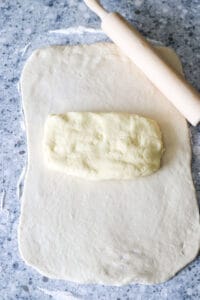
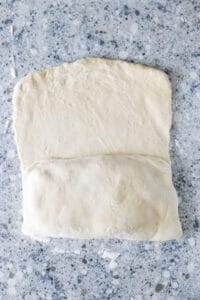
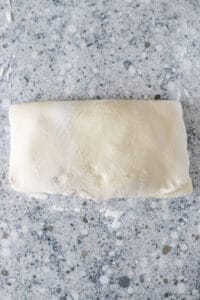
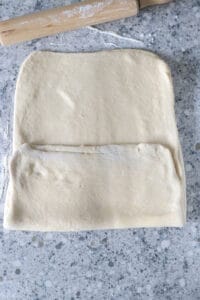
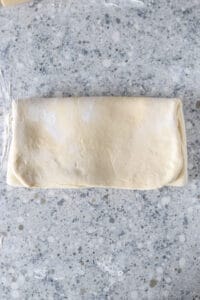
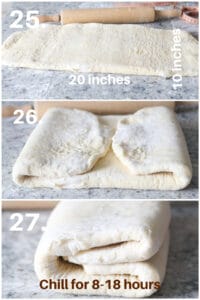


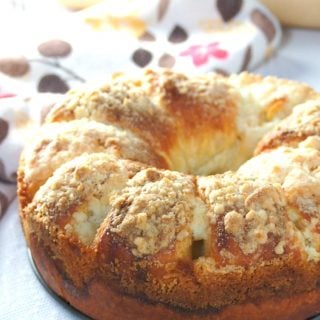





Oh yes please, I need to make something like this so I have something delicious to munch on my morning commute. I can almost smell them through my computer screen. You make them sound so delicious too! They are teasing me
Hi Ruby! Thank you! You will love these and it is actually a great idea to eat them while on the commute 🙂